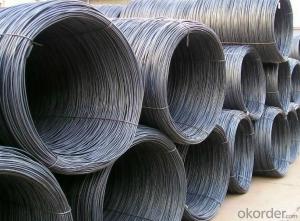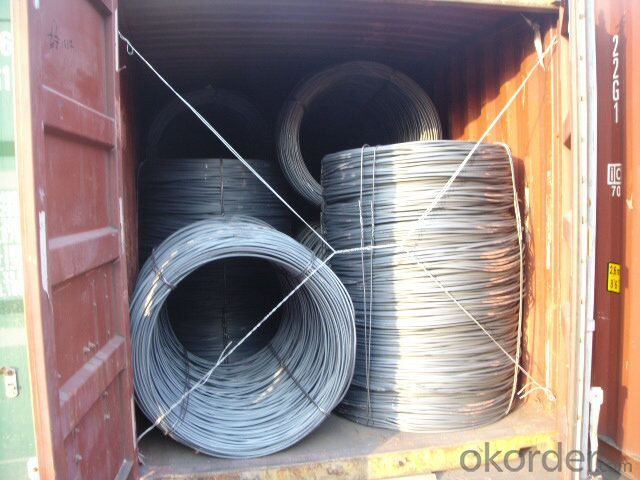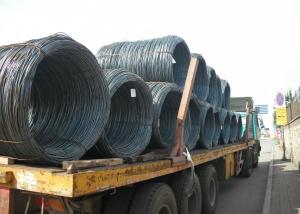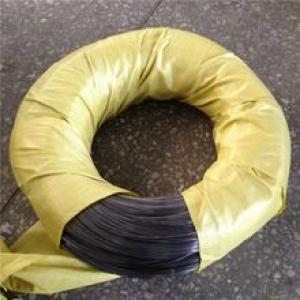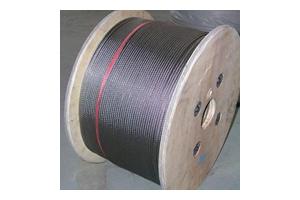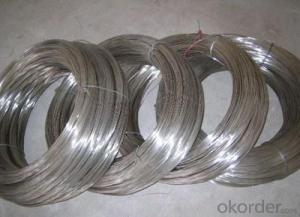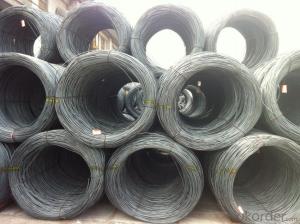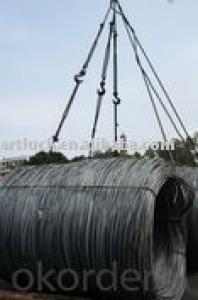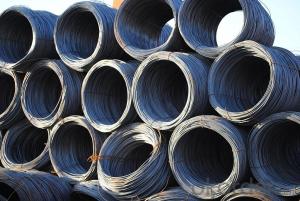Carbon Steel Wire Rod, High Quality Wire Rod
- Loading Port:
- Tianjin
- Payment Terms:
- TT OR LC
- Min Order Qty:
- 30 m.t.
- Supply Capability:
- 100000 m.t./month
OKorder Service Pledge
OKorder Financial Service
You Might Also Like
Specification
Product Description of Carbon Steel Wire Rod, High Quality Wire Rod:
OKorder is offering Steel Wire Rod Coils Steel Hot Rolled Wire Rod Q195 at great prices with worldwide shipping. Our supplier is a world-class manufacturer of steel, with our products utilized the world over. OKorder annually supplies products to European, North American and Asian markets. We provide quotations within 24 hours of receiving an inquiry and guarantee competitive prices.
Product Applications of Carbon Steel Wire Rod, High Quality Wire Rod:
Carbon Steel Wire Rod, High Quality Wire Rod are ideal for structural applications and are widely used in the construction of buildings and bridges, and the manufacturing, petrochemical, and transportation industries.
Product Advantages of Carbon Steel Wire Rod, High Quality Wire Rod:
OKorder's Carbon Steel Wire Rod, High Quality Wire Rod are durable, strong, and resist corrosion.
Main Product Features of Carbon Steel Wire Rod, High Quality Wire Rod:
· Premium quality
· Prompt delivery & seaworthy packing (30 days after receiving deposit)
· Corrosion resistance
· Can be recycled and reused
· Mill test certification
· Professional Service
· Competitive pricing
Product Specifications of Carbon Steel Wire Rod, High Quality Wire Rod:
Hot-rolled steel wire rod for building/construction
2.Near the seaport,low logistic cost
3.High precision,5-12mm
Product |
wire rod |
| Standard | AISI, ASTM, BS, DIN, GB, JIS |
| Material/steel grade | Q195-Q235,SAE1006B, SAE1008B, SAE1010B, SAE1018B, or according to customers requirements |
| Wire Gauge | 5.5-12mm |
| Coil weight | 1.8-2.1mts |
| MOQ | 25MT |
| Delivery Time | 15-30 days after receipt of L/C or deposit by T/T |
| Packing | In coil and load in container, if large quantity, by bulk vessel; Can be packed as customers' special requirements |
| Payment terms | 1).100% irrevocable L/C at sight. 2).30% T/T prepaid and the balance against the copy of B/L. 3).30% T/T prepaid and the balance against L/C |
| Application | widely used in machinery parts, manufacturing industry, electronics industry, metal tools and others |
FAQ:
Q1: Why buy Materials & Equipment from OKorder.com?
A1: All products offered byOKorder.com are carefully selected from China's most reliable manufacturing enterprises. Through its ISO certifications, OKorder.com adheres to the highest standards and a commitment to supply chain safety and customer satisfaction.
Q2: How do we guarantee the quality of our products?
A2: We have established an advanced quality management system which conducts strict quality tests at every step, from raw materials to the final product. At the same time, we provide extensive follow-up service assurances as required.
Q3: How soon can we receive the product after purchase?
A3: Within three days of placing an order, we will begin production. The specific shipping date is dependent upon international and government factors, but is typically 7 to 10 workdays.

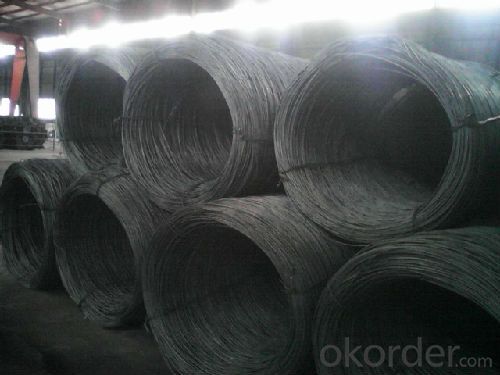
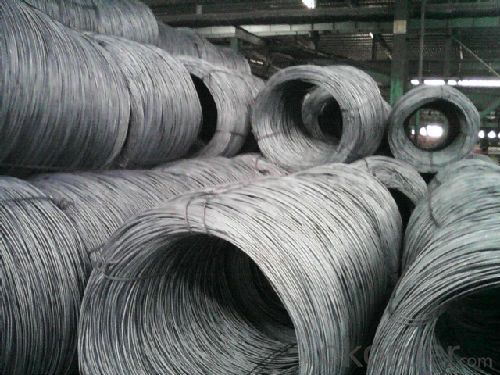
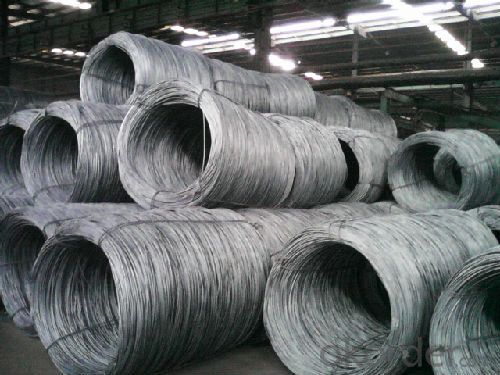
- Q: How are steel wire rods used in the production of wire springs?
- Steel wire rods are an essential component in the production of wire springs. These rods are first melted and then shaped into a cylindrical form through the process of rolling. The resulting steel wire rods are then drawn through a series of dies to reduce their diameter and increase their length. This drawing process also imparts strength and flexibility to the wire rods, making them suitable for use in springs. Once the steel wire rods have been drawn, they are typically coiled onto large spools or reels. This coiled wire is then fed into spring-making machines, where it is further processed to form wire springs. The wire is cut to the desired length and then fed into a machine that shapes it into the desired spring form, such as a helical coil or a conical shape. The inherent strength and elasticity of the steel wire rods make them ideal for use in wire springs. These springs are used in a wide range of applications, such as automotive suspensions, furniture, industrial machinery, and even household appliances. The steel wire rods provide the necessary tensile strength and resilience to withstand the forces and stresses that springs are subjected to in these applications. In summary, steel wire rods play a vital role in the production of wire springs. They provide the necessary strength, flexibility, and resilience required for these springs to function effectively in various industries and applications.
- Q: How is steel wire rod used in the manufacturing of wire for automotive braking systems?
- Steel wire rod is used in the manufacturing of wire for automotive braking systems by being subjected to a series of processes such as drawing, annealing, and coating. These processes ensure that the steel wire rod is transformed into high-quality wire with the required strength and durability. The wire is then further processed to form specific components like brake cables, springs, and reinforcements, which are essential for the efficient functioning of automotive braking systems.
- Q: How is steel wire rod used in the manufacturing of wire for high-speed trains?
- The manufacturing of wire for high-speed trains relies heavily on steel wire rod. This component is carefully chosen for its strength and durability, as it must withstand the intense forces and stresses experienced during train operation. Typically made from high-grade steel alloys, the selected wire rod ensures the wire's reliability. Once selected, the steel wire rod undergoes a series of manufacturing steps. It is heated to a specific temperature and then passed through a rolling mill to reduce its diameter and elongate it. This process improves the wire's mechanical properties, resulting in a thinner and longer wire. After rolling, the wire undergoes further treatment to enhance its strength and flexibility. Heat treatment methods like quenching and tempering are applied to achieve the desired characteristics. These treatments increase the wire's hardness, tensile strength, and resistance to fatigue, making it suitable for high-speed train applications. To protect the wire from corrosion and improve its electrical conductivity, it undergoes surface treatments and coatings. These treatments ensure the wire's longevity and maintain its performance in demanding operating environments. Once the wire is cut to specified lengths, it is spooled for transportation to train manufacturers. At the manufacturing facility, the wire is used in various applications such as electrical systems, signaling, traction control, and suspension components. Its role is crucial in transmitting electrical signals, providing stability, and supporting the overall structure of the high-speed train. In conclusion, steel wire rod plays a vital role in the manufacturing of wire for high-speed trains. Through a series of processes, it is transformed into a strong, durable, and reliable wire that meets the stringent requirements of high-speed train operations.
- Q: How is steel wire rod stored in a warehouse or distribution center?
- To ensure convenient access, safety, and damage prevention, steel wire rod is typically stored in a warehouse or distribution center in a well-ordered manner. It is common practice to store the wire rod in long, cylindrical bundles or coils, the size and weight of which vary based on specific requirements. In order to store the steel wire rod, the warehouse or distribution center employs a combination of racks, shelves, or specially designed storage systems. These storage systems are tailored to accommodate the weight and dimensions of the wire rod bundles or coils, ensuring stability and mitigating potential hazards. In certain instances, wire rods are stacked vertically on racks or shelves, with each bundle or coil placed on top of the other. This vertical storage method optimizes space utilization and facilitates the identification of different types or sizes of wire rod. Alternatively, wire rod may also be stored horizontally on racks or shelves. This approach is frequently employed when the wire rods are too heavy or lengthy to be stored vertically. Horizontal storage facilitates easier handling and guards against deformation or damage to the wire rod. Regardless of the chosen storage method, it is imperative to maintain a dry and well-ventilated environment to prevent corrosion of the steel wire rod. Additionally, proper labeling and documentation play a crucial role in efficiently identifying and tracking the wire rod inventory. Overall, the storage of steel wire rod in a warehouse or distribution center necessitates meticulous planning and organization to ensure efficiency, safety, and the preservation of the wire rod's quality.
- Q: How is steel wire rod used in the manufacturing of wire for seismic reinforcement in buildings?
- Steel wire rod is an essential component in the manufacturing of wire for seismic reinforcement in buildings. It is used as the primary raw material for producing high-strength and durable wire, which is then incorporated into the structural framework of buildings. The steel wire rod undergoes various processes, including drawing, annealing, and galvanizing, to enhance its strength, flexibility, and corrosion resistance. The resulting wire is then embedded within the concrete elements of a building to enhance its ability to withstand seismic forces and ensure structural integrity during earthquakes.
- Q: What are the different surface finishing materials used for steel wire rod?
- Steel wire rod can be finished with various materials, each offering unique advantages. Common options include: 1. Galvanizing: Also known as zinc coating, this method involves applying a layer of zinc to the wire rod's surface using hot-dip or electroplating techniques. The zinc coating acts as a sacrificial anode, guarding against corrosion and providing excellent rust protection. 2. Phosphate Coating: This technique involves treating the wire rod with a phosphate solution, resulting in a thin layer of phosphate crystals on the surface. This coating enhances the adhesion of subsequent coatings and improves corrosion resistance. 3. Epoxy Coating: A thermosetting polymer, epoxy coating is applied as a protective layer on the wire rod's surface. It offers exceptional resistance to chemicals, abrasion, and corrosion, thus increasing the rod's durability and lifespan. 4. Powder Coating: This popular method uses an electrostatic process to apply a dry powder to the wire rod's surface. The powder is then cured under heat, forming a durable and attractive coating. Powder coating provides a wide range of colors and finishes, improved resistance to chipping and scratching, and enhanced corrosion protection. 5. Chrome Plating: In this process, a layer of chromium is deposited onto the wire rod's surface. Chrome plating not only offers excellent corrosion and wear resistance but also provides a decorative finish. It is commonly used when aesthetics, durability, and corrosion protection are essential. 6. Nickel Plating: Nickel plating involves depositing a layer of nickel onto the wire rod's surface. This plating enhances corrosion resistance, creates a bright finish, improves solderability, and facilitates better electrical conductivity. These are just a few examples of the diverse range of surface finishing materials used for steel wire rod. The choice of coating or plating depends on specific application requirements, such as corrosion resistance, aesthetics, and functional properties.
- Q: How are steel wire rods used in the production of fencing?
- Steel wire rods are used in the production of fencing in several ways. Firstly, they serve as the primary material for manufacturing the wires that make up the fencing structure. These wire rods are typically made from high-quality steel, which gives the fencing its strength and durability. To start the production process, the steel wire rods are initially cleaned and coated to prevent rusting and corrosion. They are then passed through a series of machines that draw the rods down to the desired thickness and shape. This process helps to enhance the tensile strength of the wire, making it suitable for fencing purposes. Once the wire has been drawn, it is further processed to create different types of fencing products. For example, some wire rods are twisted or braided together to form chain-link fencing. These interwoven wires create a mesh-like pattern that is commonly used for securing residential or commercial properties. The wire rods used for chain-link fencing are typically galvanized or coated with PVC to increase their longevity and resistance to weathering. In addition to chain-link fencing, steel wire rods are also utilized in the production of welded wire mesh fencing. This type of fencing consists of a grid-like pattern formed by welding intersecting steel wires together. The wire rods used for welded wire mesh fencing are usually galvanized or coated with zinc to prevent rust and corrosion. Overall, steel wire rods play a crucial role in the production of fencing by providing the raw material needed to create strong, durable, and secure fences. Their versatility allows for various types of fencing to be manufactured, catering to different needs and requirements in both residential and commercial settings.
- Q: How does the ductility of steel wire rod vary with different heat treatment processes?
- Different heat treatment processes can have a significant impact on the ductility of steel wire rod. Processes such as annealing, quenching, and tempering can alter the microstructure and mechanical properties of the steel wire rod. Annealing involves heating the steel wire rod to a specific temperature and then slowly cooling it down. This process relieves internal stresses and refines the grain structure of the steel, resulting in increased ductility. The reduction in dislocations and the formation of a finer grain structure allow for greater plastic deformation before fracture. Quenching, on the other hand, rapidly cools the steel wire rod from a high temperature to room temperature or below. This sudden transformation of the microstructure makes the material harder and more brittle, causing a significant decrease in ductility. The formation of martensite, a hard and brittle phase, restricts the material's ability to undergo plastic deformation. Tempering, which follows quenching, involves reheating the steel wire rod to a lower temperature and then cooling it at a controlled rate. This process relieves some of the internal stresses induced by quenching and transforms some of the brittle martensite into a more ductile phase called tempered martensite. As a result, the ductility of the steel wire rod can be partially restored. The tempered martensite has reduced hardness but retains some of the strength and hardness obtained during quenching. In conclusion, the ductility of steel wire rod can vary significantly with different heat treatment processes. Annealing increases ductility by promoting a finer grain structure and reducing internal stresses. Quenching decreases ductility due to the formation of a hard and brittle martensitic structure. Tempering can partially restore ductility by transforming some of the martensite into a more ductile phase. The specific heat treatment process, including temperature, cooling rates, and duration, determines the extent of the changes in ductility for steel wire rod.
- Q: What are the common production processes for silver-coated steel wire rod?
- The common production processes for silver-coated steel wire rod include wire drawing, cleaning, coating, drying, and packaging.
- Q: What are the different grain size measurement methods for steel wire rod?
- There are several different grain size measurement methods commonly used for steel wire rod. These methods provide important information about the microstructure and mechanical properties of the steel. One widely used method is the ASTM E112 standard, which involves the use of a microscope to measure the average grain size. This method requires preparing a metallographic sample, polishing it to a mirror-like finish, and etching it to reveal the grain boundaries. The sample is then examined under a microscope, and the grain boundaries are traced and counted to determine the average grain size. Another method is the Sieve Analysis method, which is commonly used for determining the grain size distribution in steel wire rod. In this method, a representative sample of the wire rod is sieved through a series of progressively smaller mesh sieves. The weight of material retained on each sieve is measured, and the grain size distribution is determined based on the percentage of material retained on each sieve. The Laser Diffraction method is another commonly used technique for measuring grain size in steel wire rod. In this method, a laser beam is directed through a suspension of the wire rod particles, and the scattering pattern is measured. The size of the particles can be determined based on the diffraction pattern, allowing for the calculation of the grain size distribution. Other methods include the Electron Backscatter Diffraction (EBSD) method, which uses an electron microscope to determine the crystallographic orientation and grain boundaries in the wire rod, and the X-ray Diffraction (XRD) method, which measures the angle of diffraction of X-rays to determine the crystallographic structure and grain size. Each of these grain size measurement methods has its advantages and limitations, and the choice of method depends on factors such as the desired level of accuracy, the type of steel wire rod being analyzed, and the available equipment and expertise.
Send your message to us
Carbon Steel Wire Rod, High Quality Wire Rod
- Loading Port:
- Tianjin
- Payment Terms:
- TT OR LC
- Min Order Qty:
- 30 m.t.
- Supply Capability:
- 100000 m.t./month
OKorder Service Pledge
OKorder Financial Service
Similar products
Hot products
Hot Searches
Related keywords
